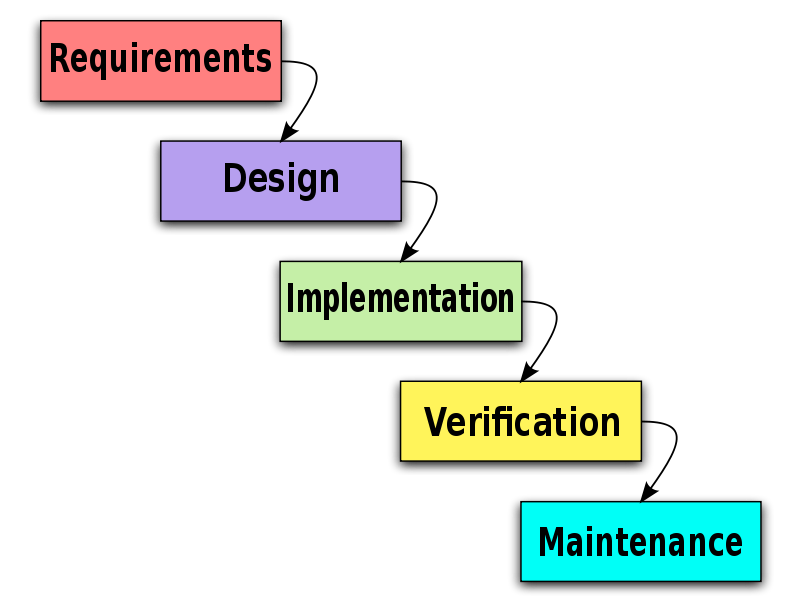When seeking to lead significant change the focus has to be on what’s most required/needed by those on the field.
This is an illustration of the Waterfall Model that applies to software development. It’s a great example of what NOT to do when leading change because the requirements are set before the product has been used or tested by the intended audience of the product. It’s a method that does not integrate or allow the feedback or needs of the audience/users until AFTER the product is complete.
Many ministry leaders make the same mistake–they have good intentions to bring change but fail to take in the feedback of those in their ministry until AFTER the changes are finalized; not only does this significantly decrease morale but it also shortens the effectiveness of the changes.
Wikipedia elaborates:
“Those opposed to the waterfall model argue that this idea tends to fall apart when the problem being measured is constantly changing due to requirement modifications and new realizations about the problem itself.”
An alternative process to the Waterfall that applies to bringing change to a ministry would be:
- Design or Strategize specific changes with your leadership team
- Expose or share those designs/strategies with a sample of your ministry constituents
- Integrate the feedback into another design/strategy session with your leadership team
- Expose or share a more holistic design/strategy for approval
Certainly the downside of this process is getting too much feedback or setting non-leaders expectations too high in terms of their contribution to the process. But integrating even one feedback step before implementation is extremely worthwhile! It raises the vision of non-leaders, exposes them to the bigger picture of your ministry, helps you and your leaders better understand the people they are leading, and allows for sharper leadership decisions.


I like the post and this semester we have made some significant changes with our ministry using an approach similar to your non-waterfall thought process. It was key to have our student leaders really air it out together with staff and come up with things that absolutely needed to change. Then suggest different approaches and keep hearing feedback.
awesome karl! so cool to hear that the “airing out” process happened BEFORE you made significant decisions.